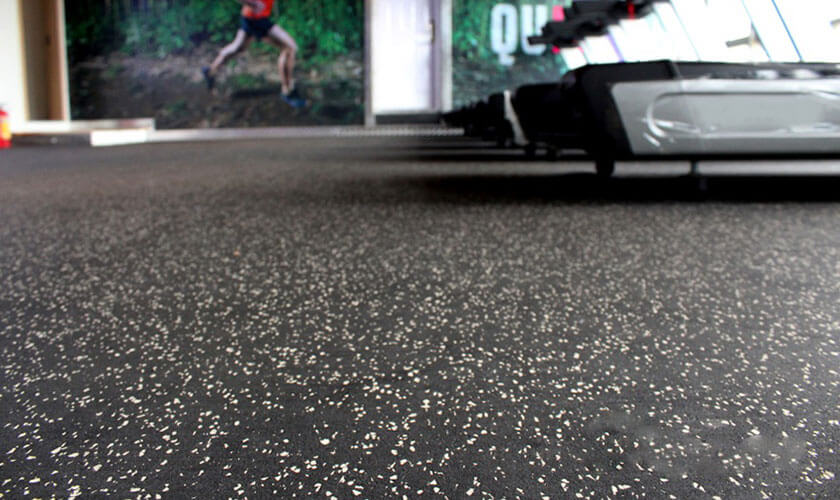When it comes to choosing flooring for your home, the options can feel overwhelming. From hardwood and tiles to vinyl and rubber, each choice has its unique appeal and set of benefits. Rubber flooring dubai, traditionally used in gyms and commercial spaces, is now gaining traction in residential homes due to its versatility, durability, and eco-friendliness. But how does it stack up against more traditional flooring options? Let’s break it down to help you decide what’s best for your space.
Durability: Rubber vs. Traditional Flooring
One of the standout features of rubber flooring is its durability. Designed to withstand heavy foot traffic and impact, it’s an excellent option for high-traffic areas like hallways, kitchens, and playrooms. Rubber is naturally resistant to scratches, dents, and cracks, making it a long-lasting choice for busy households.
In contrast, traditional options like hardwood and tiles can be more prone to wear and tear. While hardwood floors exude timeless elegance, they can easily scratch or dent under heavy furniture or pet claws. Similarly, ceramic and porcelain tiles, while durable, can crack if heavy objects are dropped on them.
Rubber flooring for its superior resilience.
Aesthetic Appeal and Versatility
Rubber flooring has come a long way in terms of design. Modern rubber flooring is available in a wide range of colors, textures, and patterns that mimic natural materials like stone or wood. This makes it a viable choice for homeowners looking to blend style with functionality. It’s especially popular in contemporary and minimalist interiors.
On the other hand, traditional options like hardwood and tiles are unmatched when it comes to classic aesthetics. Hardwood floors bring warmth and sophistication, while tiles offer a variety of textures and designs, from rustic to modern. Vinyl is another traditional contender, offering a versatile range of styles at a lower price point.
Tie. Traditional options excel in classic aesthetics, while rubber flooring offers contemporary design versatility.
Comfort and Safety
Rubber flooring is inherently soft and cushioned, making it comfortable underfoot. It also offers excellent shock absorption, which is a boon for homes with children or elderly residents. Additionally, rubber’s slip-resistant properties enhance safety, even in wet conditions, making it ideal for kitchens, bathrooms, and play areas.
Traditional options vary in comfort. Hardwood and tiles are harder underfoot and can feel cold during the winter months unless paired with underfloor heating. Vinyl, while softer than hardwood and tiles, doesn’t offer the same level of cushioning as rubber.
Rubber flooring for its comfort and safety features.
Maintenance and Cleaning
Rubber flooring is incredibly low-maintenance. Its non-porous surface resists stains and water damage, making spills easy to clean with just a damp cloth or mop. Regular sweeping or vacuuming is sufficient to keep it looking fresh.
Traditional flooring options vary in maintenance needs. Hardwood requires periodic polishing and can be sensitive to moisture, which can cause warping. Tiles are easy to clean but can accumulate grime in the grout lines, requiring extra effort to maintain. Vinyl is relatively low-maintenance but may need occasional resealing to prolong its life.
Rubber flooring for its ease of maintenance.
Eco-Friendliness
Many rubber flooring options are made from recycled materials, such as old tires, making it an eco-friendly choice. Additionally, rubber flooring’s durability means it doesn’t need to be replaced as often, reducing waste over time.
Hardwood flooring can also be eco-friendly if sourced from sustainable forests, but it’s not always the case. Tiles and vinyl, while long-lasting, involve energy-intensive manufacturing processes and aren’t as environmentally friendly as rubber.
Rubber flooring for its recycled content and sustainability.
Cost Considerations
Rubber flooring is moderately priced, often comparable to high-end vinyl or mid-range tile. However, the initial cost can be higher than budget-friendly options like basic vinyl or laminate flooring. On the flip side, rubber’s longevity and minimal maintenance requirements can make it a cost-effective investment in the long run.
Hardwood flooring is typically the most expensive option, both in terms of upfront costs and maintenance. Tiles and vinyl fall somewhere in the middle, with tiles being slightly pricier due to installation costs.
Winner: It depends on your budget. Rubber offers excellent long-term value, while traditional options like vinyl can be cheaper upfront.
Sound Insulation
One of rubber flooring’s hidden benefits is its natural sound-absorbing properties. It minimizes noise from footsteps, dropped objects, and even echoes, making it a great choice for multi-story homes or apartments.
Traditional flooring options like hardwood and tiles can amplify sound, which might require additional rugs or underlays to mitigate noise. Vinyl performs better in this category but still doesn’t match rubber’s soundproofing capabilities.
Rubber flooring for superior sound insulation.
Where Each Flooring Type Excels
- Rubber Flooring: Ideal for playrooms, gyms, kitchens, bathrooms, and high-traffic areas. Its safety, comfort, and sound insulation make it a family-friendly option.
- Hardwood Flooring: Best for living rooms, bedrooms, and spaces where aesthetics and timeless appeal are a priority.
- Tile Flooring: Perfect for bathrooms, kitchens, and areas prone to moisture.
- Vinyl Flooring: A budget-friendly, versatile option for any room.
Conclusion
Rubber flooring dubai and traditional options ultimately depends on your needs, budget, and aesthetic preferences. Rubber flooring is an excellent choice for households prioritizing durability, safety, and low maintenance, especially in high-traffic or moisture-prone areas. Meanwhile, traditional options like hardwood and tiles shine in spaces where timeless elegance or a specific style is desired.



